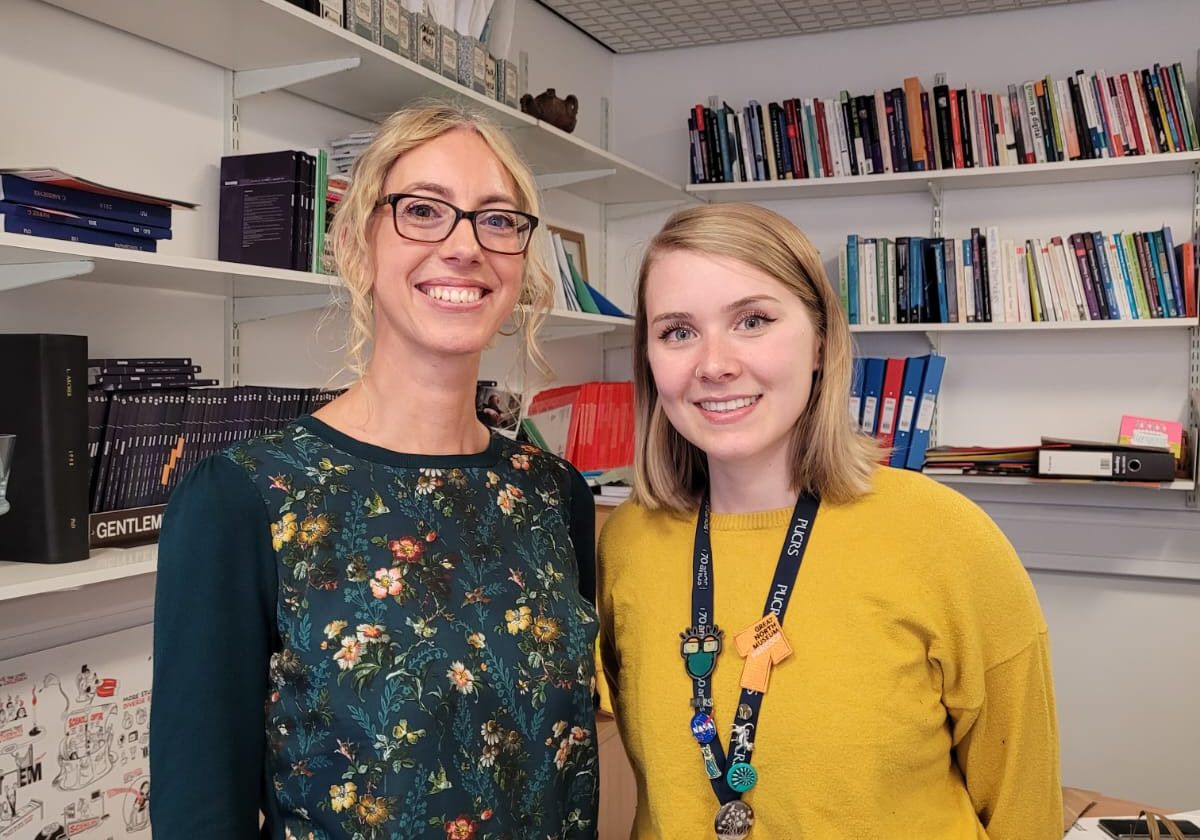What shapes people with disabilities’ scientific aspiration and capital? Reflexions on science capital and science museums
By ASPIRES Research, on 20 January 2023
Guest blog by Gabriela Heck
A Brazilian PhD student, Gabriela Heck, visited the ASPIRES team at UCL during her 6-month research exchange to the UK. In this blog she shares how the ASPIRES research helped inspired her own PhD project on inclusion in STEM for people with disabilities.
I first came across the ASPIRES project in 2021 and the findings helped inspire my own PhD research in Education, in Brazil. The ASPIRES findings show how various factors shape young people’s science identities and aspirations and, in particular, how these are heavily influenced by social inequalities (such as social class, gender and ethnicity) which in turn influence whether a young person has opportunities to experience, do well in, feel connected with, be recognised in, and continue with STEM. However, when we look closer at these inequalities in STEM, there is another underrepresented group, whose exclusion, I believe, needs to be considered more in depth: people with disabilities.
The exclusion of people with disabilities from STEM is an issue that I feel passionately about. I became aware of the exclusion of the Brazilian Deaf community from science while studying towards my Biology undergraduate (2018). There was a lack of materials and resources adapted to sign language, which can deter this community from feeling included and stop them from engaging with science.
In my PhD, I hypothesise that a lack of representation and accessibility in science leads people with disabilities to feel that this field is not for them and creates unequal patterns in scientific literacy, scientific aspiration and science capital.
To challenge these inequalities and promote the inclusion of people with disabilities in the STEM field, together with supporting young people’s science aspirations and science capital, my PhD proposes to look at how science museums can (better) support the science-related inclusion and aspirations of people with disabilities.
My research aims to identify both different accessibility features in science museums that can help people with disabilities to engage with science and also the forms of exclusion that are present in exhibitions and museum spaces. I will interview visitors with disabilities and understand their perspectives and experiences regarding science museum accessibility and their perceptions of how welcoming they feel that science museums are for visitors with disabilities. I also hope to explore how science museums can contribute to individuals’ science capital.
Between August 2022 and January 2023, I undertook a small-scale research project at Newcastle University and in October 2022 I was pleased to visit UCL to talk with the STEM Participation & Social Justice group about my PhD project and other activities that I have developed in Brazil, related to Science Capital.

Professor Louise Archer (ASPIRES Project Director) with Gabriela Heck.
Since 2021, I have been translating and summarising materials produced by the research group into Portuguese, and have made them available on social media, with subtitles and with translation to Libras (Brazilian Sign Language). I worked with the STEM Participation & Social Justice group (which the ASPIRSES project is a part of) to translate the YESTEM Equity Compass into Portuguese, and helped translate the Primary Science Capital Teaching Approach too.
I believe that Science Capital is a useful concept for understanding inequalities in science participation and the factors that lead to the (dis)continuation of young people in scientific fields after compulsory education. When focusing on people with disabilities, it can help us to understand the causes of their exclusion and foreground the lack of accessibility and representation as well as helping us to consider measures to support their inclusion and wellbeing in STEM. Breaking down barriers so that more people can be inspired by and engage with science not only expands the number of people who can work in STEM jobs, diversity also benefits and enriches STEM, enhances innovation and can help create a fairer and more inclusive society.
Further Reading
You can find Gabriela’s Portuguese summary resources on Instagram, Twitter and YouTube.
 Close
Close


 This post was originally written for
This post was originally written for  Missing from much of this analysis was any student opinion of these reforms – what did the young people affected by these changes think of them? Last winter, as part of a data collection cycle for the ASPIRES 2 study
Missing from much of this analysis was any student opinion of these reforms – what did the young people affected by these changes think of them? Last winter, as part of a data collection cycle for the ASPIRES 2 study
